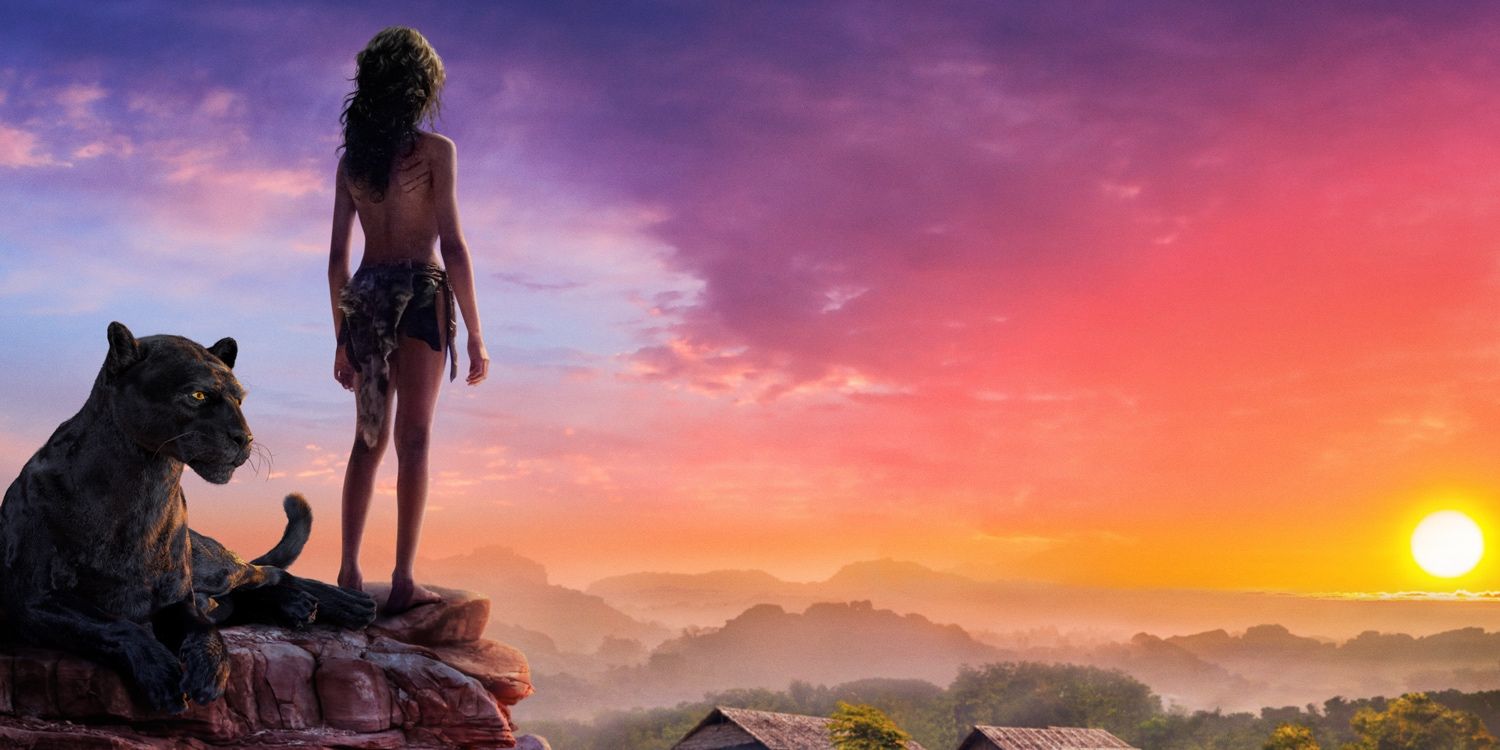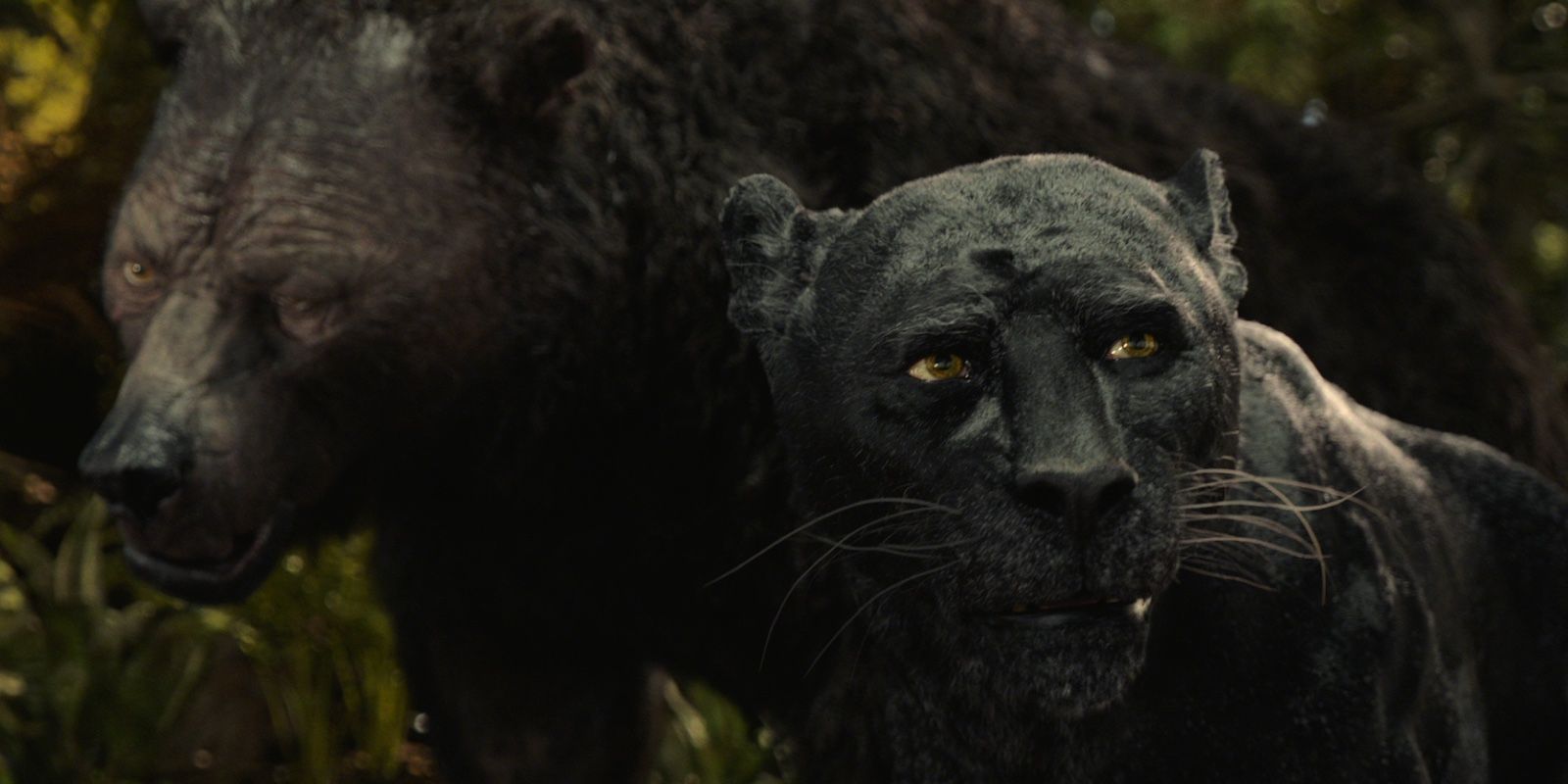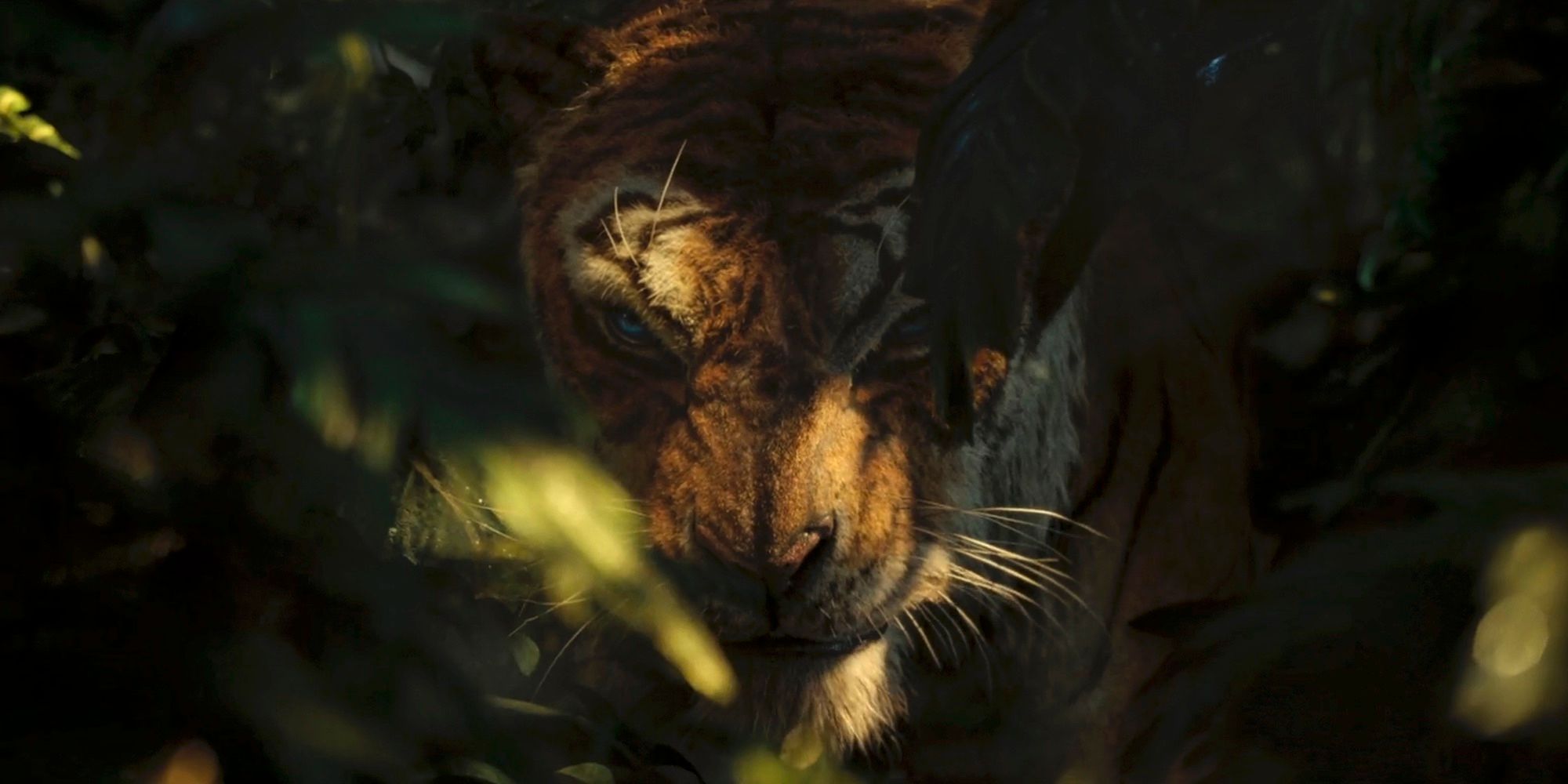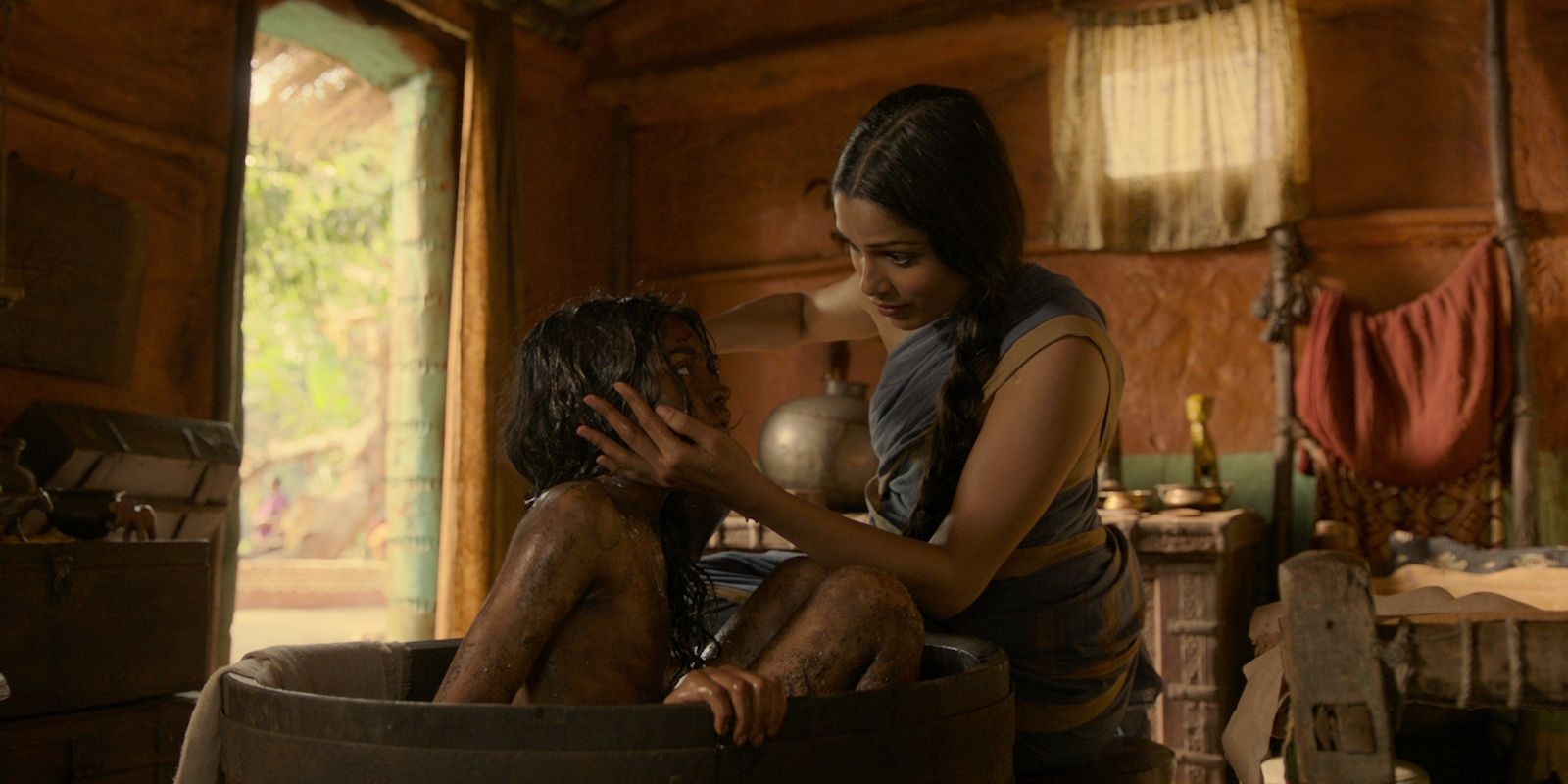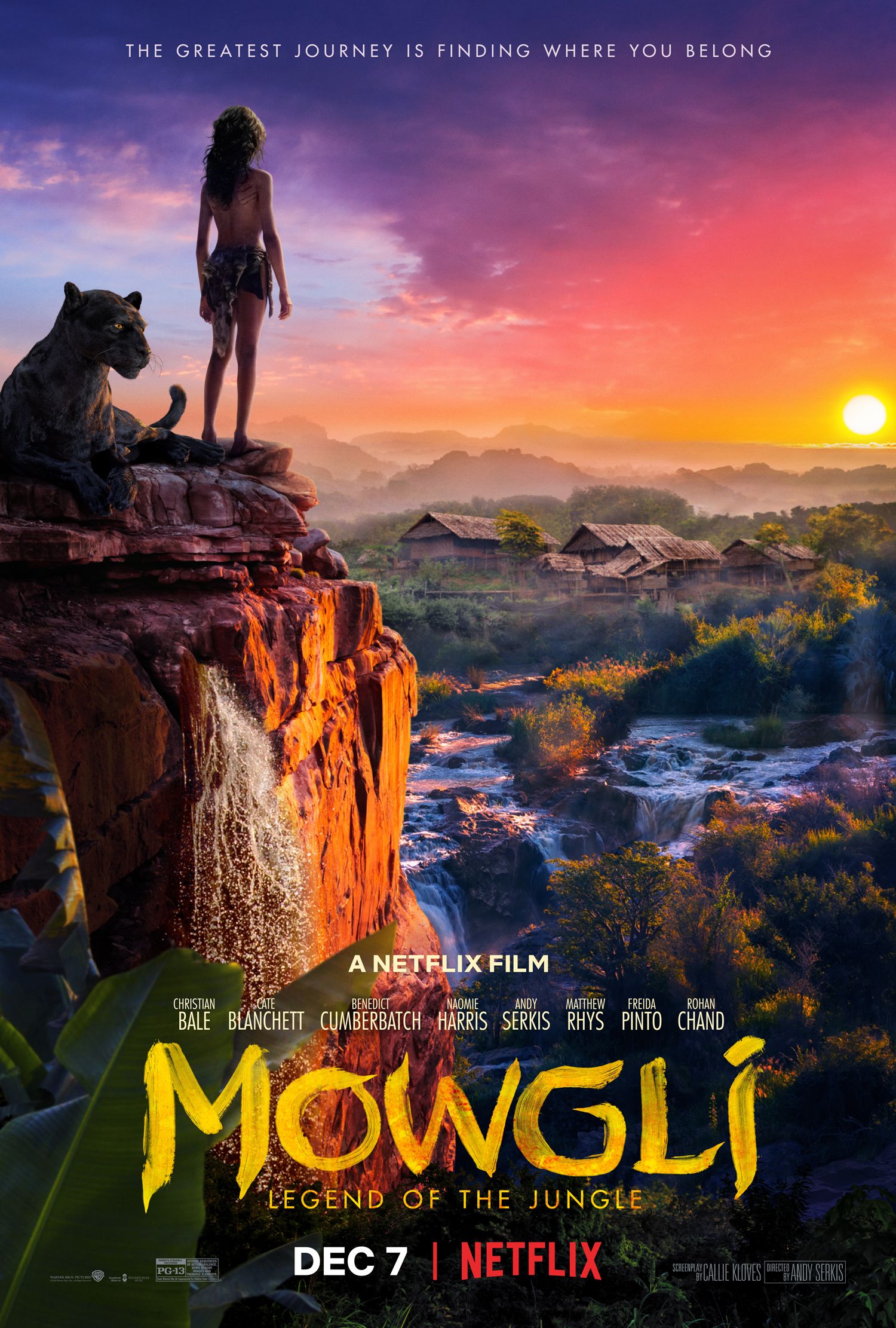Mowgli: Legend of the Jungle is a darker adaptation of Kipling's stories, with stunning visual feats from director Andy Serkis and an impactful story.
Rudyard Kipling's The Jungle Book - a collection of stories published in 1894 about the animals that inhabit a jungle in India - has become the basis for many adaptations over the years. Perhaps the most famous is Disney's animated The Jungle Book released in 1967. More recently, the studio reimagined its own animated movie to live-action. Jon Favreau's The Jungle Book blended live-action elements with CGI, hitting theaters in 2016 and becoming a critical and box office hit. At the same time Disney was producing their live-action Jungle Book, motion capture visionary Andy Serkis was working on his own adaptation of the original stories, titled Mowgli: Legend of the Jungle. This other Jungle Book adaptation is heading to Netflix more than a year and a half after Disney's own movie hit theaters. Mowgli: Legend of the Jungle is a darker adaptation of Kipling's stories, with stunning visual feats from director Andy Serkis and an impactful story.
Mowgli: Legend of the Jungle follows the young man-cub Mowgli (Rohan Chand) who was raised by wolves and protected by the pack from the vicious tiger, Shere Khan (Benedict Cumberbatch), that killed Mowgli's parents when he was a baby. Though Nisha (Naomie Harris) made sure to raise Mowgli as another one of her wolf children, he's aware that he's unlike his brothers. With the help of the panther Bagheera (Christian Bale) and the bear Baloo (Andy Serkis), Mowgli trains for the running, a rite of passage in which the young wolves run from Bagheera and must avoid being caught before being officially accepted into the pack. All Mowgli wants is to prove himself to the wolves and become a part of the pack.
However, with the wolf pack's leader Akela (Peter Mullan) growing older, Shere Khan senses weakness and begins killing the cattle of the local man village in order to sow discord among the pack and the jungle at large. Bagheera fears for Mowgli, who is no longer safe within the jungle where he was raised. Still, Mowgli struggles with his identity, having been raised as a wolf but knowing in his heart he is a man. After seeking out answers about his future from the ancient python known as Kaa (Cate Blanchett), Mowgli eventually ventures into the man village, where he's taken in by the hunter John Lockwood (Matthew Rhys), who's come to the jungle to kill Shere Khan. Ultimately, though, it's unclear if Mowgli will be able to become the bridge between the jungle and the world of man, allowing the two disparate worlds to live alongside each other peacefully.
Serkis directed Mowgli: Legend of the Jungle - his second feature-length directing credit following 2017's Breathe - from a script written by newcomer Callie Kloves, the daughter of Harry Potter movie scribe Steve Kloves. Serkis is perhaps more well known for his motion capture performances in The Lord of the Rings films and the Planet of the Apes prequel trilogy. To be sure, he puts those motion capture skills to work in Mowgli, which features a great deal of impressive CGI in order to bring the animals of the jungle to life. Because Serkis is so well-versed in motion capture technology, it's clear he thoughtfully directed the movie to both showcase and push the limits of the technology used in Mowgli. The result is somewhat of a mixed bag, with outstanding moments of masterful CGI (a scene starring many of the animals that takes place in the rain comes to mind in particular), but there are also weaker moments - such as some especially clunky CGI humans at one point early on. For the most part, though, the CGI and motion capture blends almost seamlessly in with the live-action elements.
Further helping to bring the animals of the jungle to life are the actors behind Bagheera, Baloo, Kaa and Shere Khan. Mowgli enlisted an all-star cast to lend their talents to these characters, and they undoubtedly help these creatures nearly jump off the screen with their realness. But, perhaps what's especially compelling about the voice acting in Mowgli may not even be the performances of Bale, Serkis, Blanchett and Cumberbatch. Mowgli manages to animalize the voices of these performers - giving Cumberbatch a menacing growl as Shere Khan, Bale a near-purring lilt when Bagheera is relaxed, Blanchett a hissing undertone as Kaa and Serkis a deep rumbling as Baloo. It's unclear how much of the animalizing of the voices was done during the actors' performances and how much was added in post-production, but the result is a cast of animal characters that truly sound like animals - rather than very human actors lending their voices to CGI creatures. It's a subtle audio touch that adds to the immersive feel of Mowgli.
But, of course, Mowgli: Legend of the Jungle ultimately rests on the shoulders of the actor in the titular role: Chand. The young actor is a strong lead for Serkis' movie, portraying the conflicted Mowgli in an especially compelling manner. Legend of the Jungle also dives much deeper into Mowgli's character than other adaptations of The Jungle Book, not shying away from the darker aspects of the young boy being raised among the wolves. In this film, Mowgli has a coming-of-age storyline in which he must learn his place in both the jungle and the world of man; a storyline paralleled by that of the young albino wolf cub Bhoot (Louis Ashbourne Serkis). Chand bears the heavy load of leading the live-action cast in Mowgli well, helping to ground the CGI elements and taking viewers through the titular character's journey with a compelling performance.
Mowgli: Legend of the Jungle still struggles somewhat in adapting the stories of Kipling's The Jungle Book into a cohesive storyline, feeling a little disjointed at times, like the filmmakers didn't know how to transition from one plot beat to the next. That said, Kloves' script is perhaps the most linear adaptation of The Jungle Book, providing a clear throughline of Mowgli's coming-of-age tale and how it intersects with the jungle creatures. Further, Mowgli: Legend of the Jungle doesn't shy away from the darker side of the jungle and the titular character himself, depicting the young boy as a true son of nature - nature that can be brutal at times. There are times when that brutality, both of the jungle and of man, is taken a little far, but those moments are neither without realism nor emotional weight that serves the larger story. Altogether, the movie is a compelling adaptation of Kipling's stories that maintains the themes of man versus nature and finding your place in the world.
Ultimately, Mowgli: Legend of the Jungle does manage to set itself apart from previous Jungle Book adaptations through its darker story and the visual mastery in its CGI animals. It's perhaps a little too scary from younger viewers (one particular sequence showcasing the brutality of man is especially horrifying, though not violent), but is undoubtedly worth checking out for viewers interested in the story or the work of Serkis. Mowgli may additionally benefit from its Netflix release (and limited theatrical release) because, though it's different enough from Favreau's movie to add something to the story, it still may not be quite worth a second trip to the theater in two years for a Jungle Book adaptation. The CGI and motion capture work certainly makes Mowgli: Legend of the Jungle worth seeing on a big screen - but a big TV screen will do just as well as a theater screen, in this case.
Trailer
Mowgli: Legend of the Jungle is now playing in select theaters and is available for streaming through Netflix. It is 104 minutes long and is rated PG-13 for intense sequences of action violence including bloody images, and some thematic elements.
Let us know what you thought of the film in the comments section!

